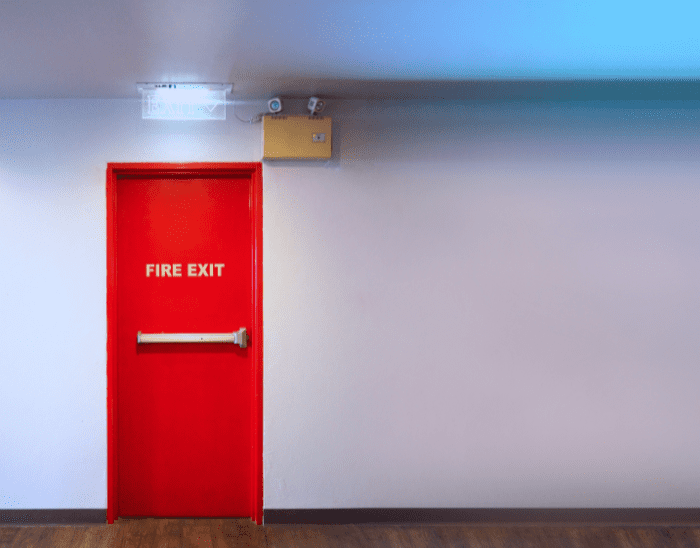Fire safety is a crucial aspect of modern building design, and fire doors play a central role in protecting occupants and property. However, the performance of a fire door heavily depends on the quality and construction of its supporting fire door frames. Choosing the right materials and adhering to strict safety standards ensures that fire doors function effectively during emergencies, containing flames and smoke and giving occupants crucial time to evacuate.
Partnering with trusted providers such as fire door frames guarantees compliance with Australian fire safety regulations. These frames are engineered to withstand high temperatures and provide the structural stability needed to maintain the integrity of fire doors under extreme conditions.
Key Materials Used in Fire Door Frames
Fire door frames are manufactured from a variety of durable materials, each selected for its heat-resistant and structural properties:
- Steel: Steel frames are highly durable, resistant to warping, and ideal for commercial and industrial applications. They provide excellent fire resistance and require minimal maintenance over time.
- Timber: Hardwood frames are commonly used in residential and some commercial settings. Properly treated and certified, timber frames offer both fire resistance and aesthetic appeal.
- Aluminum: Lightweight and corrosion-resistant, aluminum frames are increasingly used in modern architecture. While less common than steel or timber, they are suitable for specific design applications.
Each material type must be combined with appropriate fire-rated seals and intumescent strips to prevent smoke and flames from bypassing the door frame.
Standards and Compliance
Fire door frames are not simply decorative or structural components—they are critical safety elements that must meet strict regulatory requirements. In Australia, fire door frames are required to comply with:
- Building Code of Australia (BCA): Outlines minimum fire safety requirements for commercial and residential buildings.
- AS 1905.1: Sets the standard for fire-resistant doorsets, including door frames, ensuring performance under fire conditions.
- AS 1530.4: Provides methods for fire testing and classification, confirming the frame’s ability to contain fire for specified periods.
Compliance with these standards ensures that fire door frames can withstand heat and structural stress, support the door leaf effectively, and maintain fire containment during emergencies.
Components of High-Quality Fire Door Frames
High-quality fire door frames are carefully designed to integrate seamlessly with the door and building structure. Key components include:
- Head Frame: The top horizontal section that supports the door leaf and maintains alignment.
- Jambs: Vertical sections that anchor the frame to the wall and provide the primary structural support.
- Intumescent Seals: Expand under heat to fill gaps between the door and frame, enhancing fire and smoke containment.
- Thresholds or Sills: In certain designs, these help seal the bottom of the door and prevent smoke penetration.
Proper installation and alignment of these components are essential to ensure the fire door performs as intended in emergency situations.
Benefits of Choosing Certified Frames
Using certified fire door frames provides multiple advantages:
- Enhanced Safety: Frames maintain structural integrity under fire conditions, helping contain flames and smoke.
- Durability: High-quality materials and construction ensure long-lasting performance, reducing maintenance and replacement costs.
- Regulatory Compliance: Certified frames meet all Australian fire safety standards, minimizing legal and insurance risks.
- Integration with Fire-Rated Hardware: Frames accommodate locks, hinges, and other fire-rated accessories, ensuring a fully compliant assembly.
Installation and Maintenance Considerations
Correct installation is as important as selecting the right material. Frames must be plumb, level, and securely anchored to prevent gaps or misalignment that could compromise fire resistance. Additionally, regular inspections and maintenance are necessary to identify wear, damage, or deterioration of seals and hardware.
Maintenance routines should include checking the alignment of the frame, the condition of intumescent strips, and the functionality of door hardware. Keeping detailed records of inspections helps demonstrate compliance and supports ongoing fire safety management.
Applications Across Buildings
Fire door frames are used in a wide range of buildings, from commercial offices, hospitals, and schools to residential apartments. Their role is particularly critical in high-occupancy spaces, corridors, stairwells, and areas requiring compartmentalization to prevent fire spread. Choosing high-quality, compliant frames ensures the safety of occupants and protects property, reducing potential fire damage.
Conclusion
Selecting the right materials and ensuring compliance with established standards is essential for the effectiveness of fire door frames. From steel and timber to aluminum, high-quality frames provide durability, structural integrity, and fire containment. Coupled with proper installation and maintenance, they form the backbone of any reliable fire protection system, safeguarding lives and property while meeting Australian regulatory requirements.
